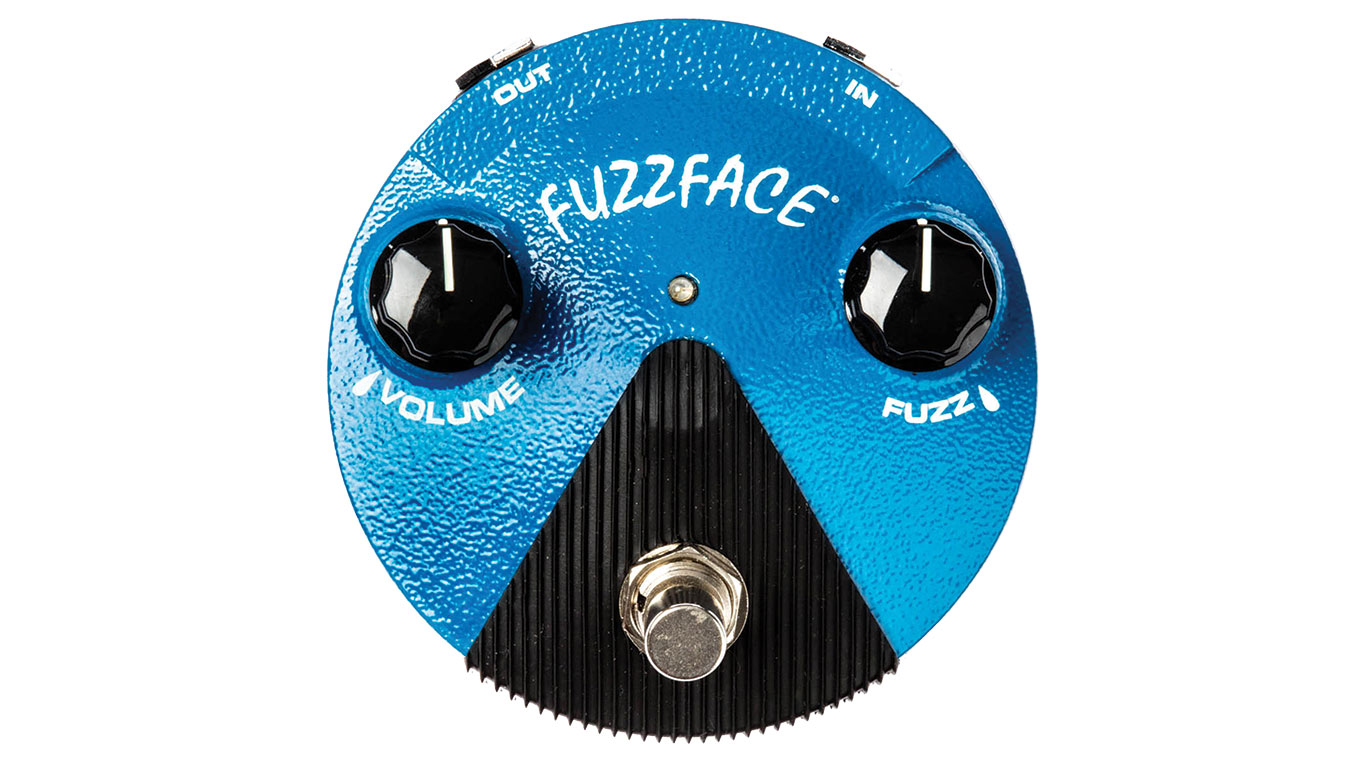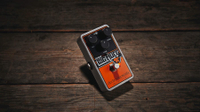Stompbox icons: Fuzz Face
The Hendrix-favoured fuzz that launched a thousand pedals

When people think of classic fuzz pedal tones, there’s a pretty strong chance that the stompbox they’ve got in mind is the Fuzz Face - and it’s still sought after today.

Designed in 1966 by Arbiter Electronics in London, the Fuzz Face is supposedly the first pedal to use the distinctive DPDT switch that has become the de-facto standard for stompboxes; though it’s worth noting that most true-bypass pedals use its brother, the 3PDT.
Ivor Arbiter got the idea for its unique shape after looking at the base of a microphone stand, Jimi Hendrix got his hands on one, and the rest is history.
The classic Fuzz Face sound relies on temperamental germanium transistors
The circuit itself bears more than a passing resemblance to the Sola Sound Mark 1.5 Tone Bender, as well as engineering textbook examples of shunt-series- feedback amplifiers.
As it’s only a handful of parts, it came to be heavily modded - many aspiring DIY pedal-builders choose the Fuzz Face as their first circuit for this reason. Initially manufactured by Arbiter, they were then badged Dallas-Arbiter, and a final run was done in the 80s under the Dallas name after the company moved to the US.

The classic Fuzz Face sound relies on temperamental germanium transistors, and the various types used on the original units have played a part in the mythos and cork-sniffing that has followed.
The original Arbiter London models are said to have used AC128s, while most of the germanium-era devices that followed used NKT275s.
Get the MusicRadar Newsletter
Want all the hottest music and gear news, reviews, deals, features and more, direct to your inbox? Sign up here.
As a result of the parts changes, as well as the inherent tendency of germanium transistors to fail, sound different, or react to their environment, Hendrix’s guitar tech Roger Mayer recalls him purchasing multiple Fuzz Faces at a time in order to audition them, only to find out later that his favourite no longer had the same mojo in a different venue, or after heavy use.
Sometime later, the pedals moved to using more predictable silicon transistors. Consistency off the factory-line went up, but the classic sound was gone.

Dunlop FFM1 Fuzz Face Mini Silicon
£104
The switch to silicon transistors happened early enough that Hendrix adopted the new pedals. His issue with the new version was reportedly not so much about the sound, as about the fact that silicon transistors are more prone to picking up radio transmissions. Then again, maybe the chaotic experience of playing through radio interference inspired his later, more wig-out jams like Machine Gun.

Dunlop FFM2 Fuzz Face Mini Germanium
£127
When they reissued the Fuzz Face, Dunlop brought out a line of small-form factor pedals with modern affordances like centre-negative power jacks - the original circuit used PNP transistors in a configuration that meant a centre-positive supply - and true bypass. The first Fuzz Face reissue was the silicon model (left), followed by this germanium model, with vintage-correct slightly mismatched transistors.

Z.Vex Fuzz Factory
£195
Of all the oddballs in the Fuzz Face family tree, the Fuzz Factory is perhaps the oddest. A more powerful, even higher gain modification of the 23 circuit, the Fuzz Factory is famous for the way it oscillates at specific feedback pitches depending on the controls and position of the ‘stability’ knob. It’s responsible for many of the best fuzzy squeals and futuristic guitar sounds on Muse’s Origin of Symmetry.
Got the buzz for fuzz? These are the best fuzz pedals around
Since Keith Richards plugged into a Maestro Fuzz Tone back in 1962, fuzz pedals have evolved to become one of the most varied types available. Here, we’ve rounded up some of the very best fuzz pedals for guitarists, which run the gamut of tonal options.
Classic tones
Get the tone #1: Hendrix all-out fuzz
More is more. Turn up your amp, turn up the fuzz and unleash screaming riffs. If the amp doesn’t feed back when you’re not playing, you’re not loud or fuzzy enough. If the Fuzz Face is at the start of your chain, you can control its fuzz with your guitar’s volume. A guitar with a treble bleed mod will help you keep your edge.
- Fuzz: Max
- Volume: set for your amp and chain
Get the tone #2: blue tone
In order to find the sweet spot for lower-gain tones, you’ll want to experiment with the fuzz control, as a Les Paul and Strat will require very different settings. Put the Fuzz Face at the front of your chain and roll the tone right back. You’ll find a warm, slightly saturated sound good for chords and melody riffs.
- Fuzz: 9 o’clock
- Volume: set for amp and chain
Get the tone #3: lo-fi dino jr rhythm
This time, carefully dial in the Fuzz Face to a mid-gain sound for your amp and guitar. With the tone pulled back just a little, you should get a beefy, thick rhythm sound. Stack with another fuzz, or with a boost in front to kick things back up a gear, and into Dinosaur Jr lead territory.
MusicRadar is the number one website for music-makers of all kinds, be they guitarists, drummers, keyboard players, DJs or producers...
- GEAR: We help musicians find the best gear with top-ranking gear round-ups and high-quality, authoritative reviews by a wide team of highly experienced experts.
- TIPS: We also provide tuition, from bite-sized tips to advanced work-outs and guidance from recognised musicians and stars.
- STARS: We talk to musicians and stars about their creative processes, and the nuts and bolts of their gear and technique. We give fans an insight into the craft of music-making that no other music website can.
“A fully playable electro-mechanical synth voice that tracks the pitch of your playing in real time”: Gamechanger Audio unveils the Motor Pedal – a real synth pedal with a “multi-modal gas pedal”
“Instead of labouring over a perfect recreation, we decided to make an expanded counterpart”: Chase Bliss teams up with Mike Piera for Analog Man collab based on the legendary King Of Tone













